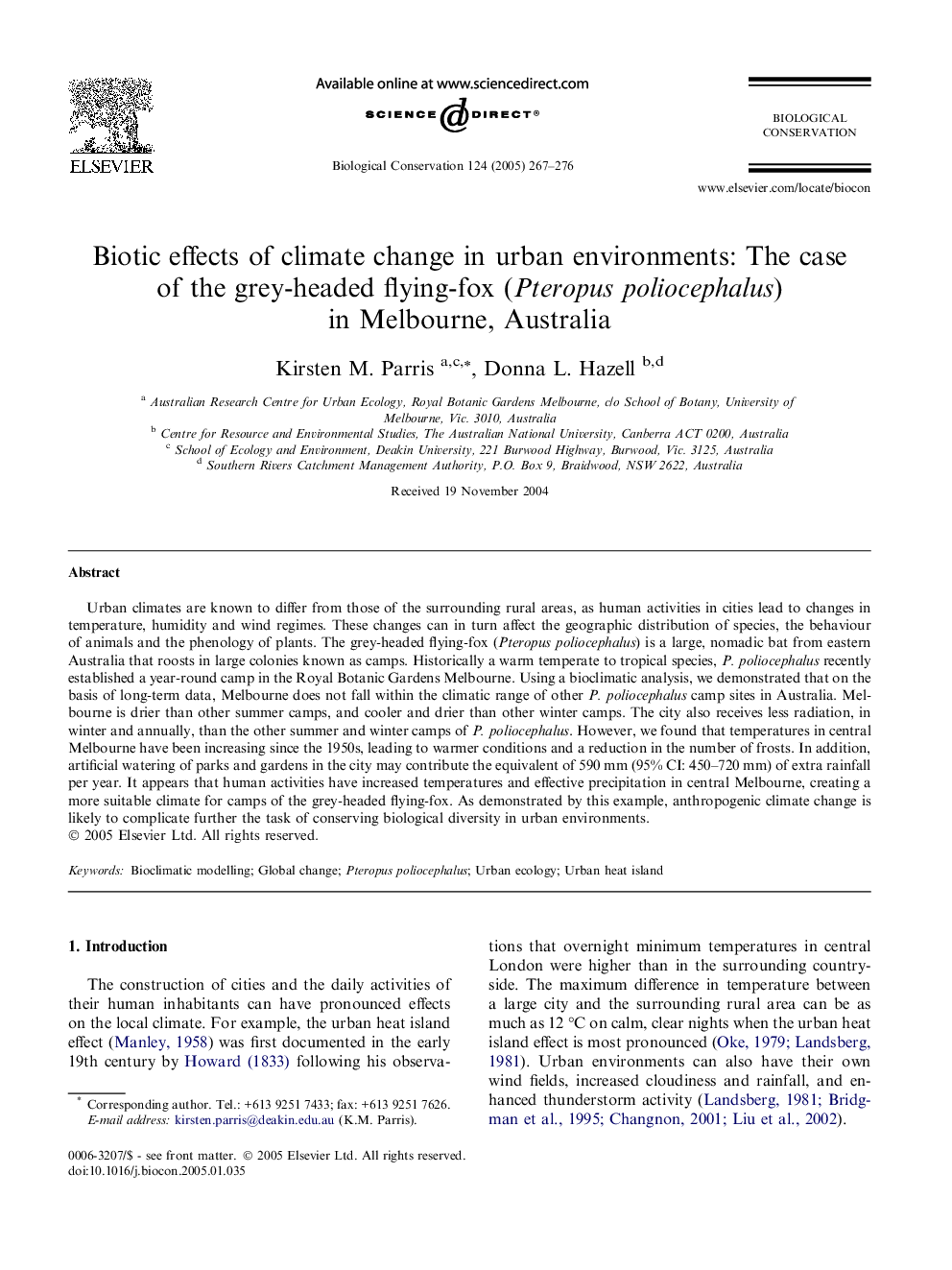| Article ID | Journal | Published Year | Pages | File Type |
|---|---|---|---|---|
| 9445991 | Biological Conservation | 2005 | 10 Pages |
Abstract
Urban climates are known to differ from those of the surrounding rural areas, as human activities in cities lead to changes in temperature, humidity and wind regimes. These changes can in turn affect the geographic distribution of species, the behaviour of animals and the phenology of plants. The grey-headed flying-fox (Pteropus poliocephalus) is a large, nomadic bat from eastern Australia that roosts in large colonies known as camps. Historically a warm temperate to tropical species, P. poliocephalus recently established a year-round camp in the Royal Botanic Gardens Melbourne. Using a bioclimatic analysis, we demonstrated that on the basis of long-term data, Melbourne does not fall within the climatic range of other P. poliocephalus camp sites in Australia. Melbourne is drier than other summer camps, and cooler and drier than other winter camps. The city also receives less radiation, in winter and annually, than the other summer and winter camps of P. poliocephalus. However, we found that temperatures in central Melbourne have been increasing since the 1950s, leading to warmer conditions and a reduction in the number of frosts. In addition, artificial watering of parks and gardens in the city may contribute the equivalent of 590Â mm (95% CI: 450-720Â mm) of extra rainfall per year. It appears that human activities have increased temperatures and effective precipitation in central Melbourne, creating a more suitable climate for camps of the grey-headed flying-fox. As demonstrated by this example, anthropogenic climate change is likely to complicate further the task of conserving biological diversity in urban environments.
Related Topics
Life Sciences
Agricultural and Biological Sciences
Ecology, Evolution, Behavior and Systematics
Authors
Kirsten M. Parris, Donna L. Hazell,
